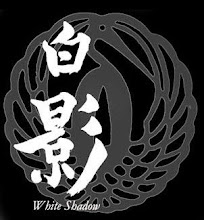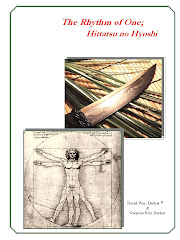I was recently asked what I would recommend for someone buying their first pistol. I am not a firearms expert, just an aficionado. Since Guns and blades go together well I thought I’d post my suggestions for those of you who might also be thinking about buying your first handgun. Ultimately a lot really depends on your hand size and what feels comfortable. The other major qualifier is what do you want the gun for, self defense or target shooting. Either way, a revolver is often the best choice (rather than a semi-auto) for beginners. For inexperienced shooters I think they are easier/safer to operate. I know a lot of people will probably gnash their teeth over that comment, oh well. So lets look at revolvers first and then next time I’ll talk about Semi-autos. Handguns come in a bewildering array of sizes, calibers, and finishes. It might be best to start with a brief description of the parts. This photo should make easy work of that.
 Frame Size:
Frame Size: A small frame pistol is easier to conceal in a purse and fits smaller hands but there are two trade-offs. One, the felt recoil is worse (which sometimes makes people flinch when they shoot them). Two, the shorter barrels found on most small frame guns seriously reduce accuracy anywhere beyond 7-10 yards. The second issue is not as important if the pistol is simply going to be used in the home or carried for self-defense. Mid-size pistols generally provide better accuracy for target shooting and their extra weight reduces felt recoil. In revolvers I prefer a mid-size frame. Thos photos shows three different frame sizes.
 Caliber:
Caliber: My first choice of calibers is 357 magnum. My reason for choosing a 357 magnum is that I can shoot cheaper, lower recoil, 38 special ammo if I want to. Or I can shoot 357 magnum ammo, in the same gun, for more power. A pistol made for 38 special is limited to shooting 38 special ammo only. I would recommend staying away from 22, 25, and 380 calibers (most of these are only available in semi-auto pistols anyway.) There are some promising new calibers like 327 magnum but one big advantage to shooting 38 specials is the ammo is available in pretty much every gun shop, Walmart etc. across the nation.
Barrel Length: Barrel length is a very personal thing. Longer barrels are not necessarily more accurate, it is just easier to shoot them accurately. The further apart the front and rear sights are the greater the “sight radius.” This means that small movements of the barrel are more easily detected and therefore you can see when you are moving the barrel too much. Longer barrels will give higher velocity than short ones because the powder has more time to burn and build pressure in the barrel.
Self Defense In-close: Even a 1 ½ inch snub nosed barrel will work where the range is 5-7 yards or less. These are often referred to as “belly guns” or back-up guns.
Self Defense Street-Carry: For street, concealed-carry, I recommend barrels of four inch length. They provide the best compromise of easy carry, concealment, and accuracy.
Self Defense, Target, or Competition Shooting: Once you go past a five inch barrel, concealed carry is difficult for most people. Longer barrels are good for target shooting and hunting. Anything with a barrel over 6 inches is probably going to require a shoulder harness to carry it or sit with it (as in a car).
Makes: In my opinion, Smith & Wesson is the best name in revolvers, with Colt a very close second. Ruger is also tops, and Taurus is cheaper but reliable. Prices are according to this list with S&W most expensive and on down to Taurus. By the way, there is nothing wrong with buying a good used gun, especially from a reputable dealer.
Double Action: A double action pistol operates by pulling the trigger cocking the hammer and then dropping it all in one motion, shooting the gun. Most Double action guns can be fired single action too.
Single Action: You must cock the hammer manually for each shot, then pulling the trigger drops the hammer, shooting the gun. This is obviously slower. Old West style pistols were mostly single action.
Hammer guns: Most revolvers have an external hammer like the ones in the photo.
Hammerless guns: Some revolvers and semi-autos are hammer-less, using an internal or shrouded hammer or a striker. Hammerless guns are safer if you are going to carry it in a purse or a pocket where the hammer spur could accidentally snag on something cocking it. They are usually only made in the smaller "Pocket Pistol" models.
Grips: The choice of grips is very personal. Some people like checkered walnut or rosewood. Some like textured plastics, G-10, or Micarta. Pachmyer is an old name in aftermarket grips, using a hard rubber type material. Personally if I am going to shoot it a lot, or rely on it for self defense, I prefer grips by Hogue. They are extremely ergonomic, for comfort, and made from a tacky material for excellent grip retention. One other option is Crimson Trace grips which have a red laser sight installed.
Finishes: Some people like the traditional look of blued steel. It is very attractive but the least wear resistant of all finishes. Nickle plated revolvers are also attractive but can also wear with time and are very light reflective. There are many new coatings on the market that are wear resistant and come in various colors. Personally for a work or carry piece I prefer a brushed stainless steel. This is easy to maintain and does not reflect light. Green, blue, red, and even pink guns are available, but you might want to consider their resale value compared to a more traditional finish.
So you can see there are a lot of options to consider when making your first or even your tenth purchase. Take your time, shop around, and find a gun that fits your needs for a fair price. When everything is taken into consideration what do I carry? Personally I prefer a double-action, hammer-gun, with a four inch barrel. A stainless Smith & Wesson 686 Combat Magnum is currently my favorite revolver.
Just when you thought your troubles were over, once you have bought the perfect gun you are faced with finding the perfect holster to carry it in.












